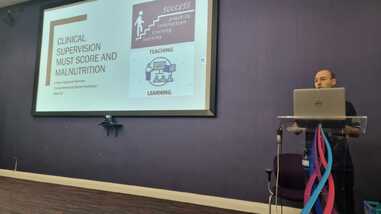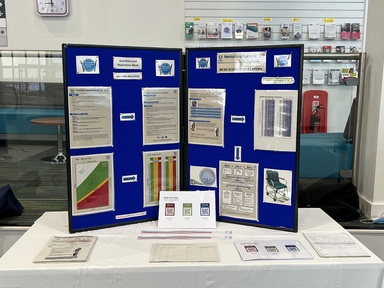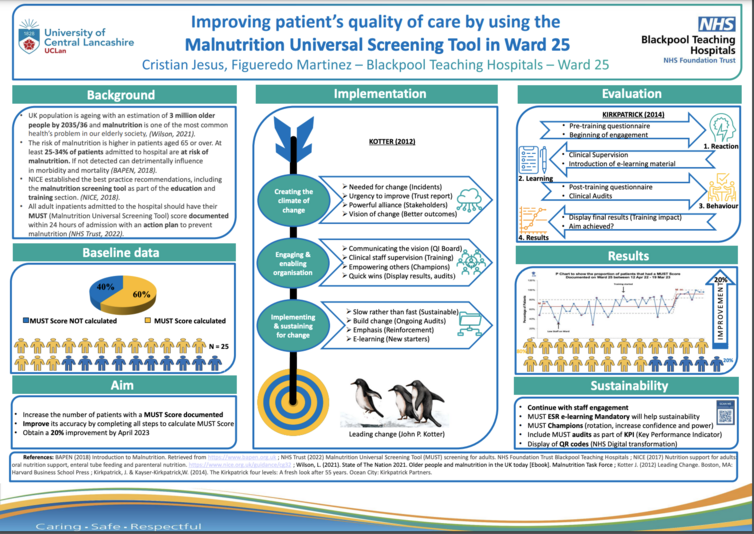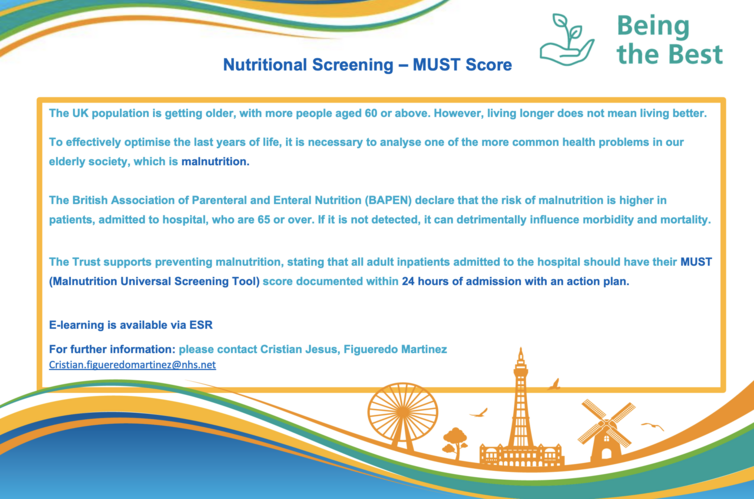Hello, my name is Cristian. I currently work as a Trainee Advanced Clinical Practitioner at Blackpool Victoria Hospital. I am very passionate about QI, especially when you can make a difference in patient care. I personally was not aware of the Fab Academy before, despite this being my second QI project, which I should share it with you all.
First of all, it is important to tell you why I decided to focus on malnutrition for my QI project. According to Wilson 2021, malnutrition is a big problem for our elderly society, which if we are referring to the UK population is ageing quickly with the fact that the estimation of almost 3 million of older people by 2035/36.
Another interesting point, is that malnutrition has been highlighted nationally by different institutions such as BAPEN 2018 that state the risk of malnutrition in inpatient can go up to 34% and if it is not detected can lead to influence the morbidity and mortality of our patients, also NICE 2018, support this with the malnutrition screening tool as part of the best practice recommendations which include education and training to the staff. Finally, focusing locally, the Trust reflects the national strategies with the MUST policy where patients should have their MUST score documented in 24h with an action plan to prevent malnutrition.
BASELINE DATA
Before thinking of implementation, it is important to analyse the problem and collect data to identify where to target my interventions.
As you can see on this pie chart, this data represents clinical audits pre-intervention and shows that 60% patient had a MUST score documented, but there is a 40% of them without a MUST score, which represents almost half of the ward if we are looking at his graphic below where 10 patients out of 25 were at risk of malnutrition.
AIM (SMART)
• Increase the number of patients with a MUST Score documented.
• Improve its accuracy by completing all steps to calculate MUST Score.
• Obtain a 20% improvement by April 2023.
Implementation was carried out using Kotter's model of change, which helps me to make some changes to the current practice and also was helpful as this model is a simple but consistent process step by step which focus on preparing and accepting change with a smooth transition between stages.
I used Kirkpatrick's model for evaluation, which provides me with the framework for planning and evaluating training initiatives.
The results of the project can be seen in my poster presentation.

In terms of sustainability, it is especially important to add the MUST E-learning package as a Mandatory for the staff, as it is currently offered as an optional module on the ESR system. QR codes which I made it myself, will help to sustain the project as nowadays the use of technologies are on demand as it is easier to read, understand and find, with NHS Digital Transformation help it is actually happening.

I created MUST champions who helped to sustain the project as they helped to disseminate the new methodology on the ward, help staff to calculate MUST score and also collect clinical audits weekly (if this is not being audited, it can detrimentally fail, as in any project we need consistency, but also needs to be monitored to keep the compliance within a high standards of care).
It has been an intense project, which honestly, I have learnt so much, but I am satisfied for the staff that they managed to acquire a new skill and also for the patients who are at the center of our care. In addition to this, this project and improvement on our service, has a lot of opportunities to be expanded to a different areas, which will be beneficial to the trust and our Blackpool community.
Click on the image below to read and download the project poster

Click on the image below to read and download the MUST score

